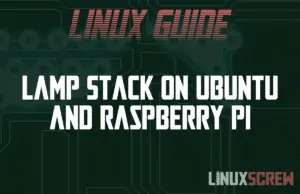Creating Multiline Strings in JavaScript [With Examples]
There are several ways to create text that spans multiple lines in JavaScript – so here they are! Method 1: Backticks This is the best method, so it goes first. It is only compatible with ECMAScript 6 and onwards, so it is only for use in modern browsers (really, if you’re using any browser that isn’t Internet Explorer, you should be fine, but you should always test your code on the browsers you want to target). var multiText = ` This is multiline text!`; console.log(multiText) // … Read more

![Creating Multiline Strings in JavaScript [With Examples] 1 Creating Multiline Strings in JavaScript](https://cd.linuxscrew.com/wp-content/uploads/2021/02/Creating-Multiline-Strings-in-JavaScript-300x194.png)
![Python Scatter Plots with Matplotlib [Tutorial] 2 Python Scatter Plots](https://cd.linuxscrew.com/wp-content/uploads/2021/02/Python-Scatter-Plots-300x194.png)
![PHP var_dump() Function [With Examples] 3 PHP var dump Function](https://cd.linuxscrew.com/wp-content/uploads/2021/02/PHP-var_dump-Function-300x194.png)
![How To Fix Broken Packages in Ubuntu [Tutorial] 4 How To Fix Broken Packages in Ubuntu](https://cd.linuxscrew.com/wp-content/uploads/2021/02/How-To-Fix-Broken-Packages-in-Ubuntu-300x194.png)

![touch Command in Linux and Bash [with Examples] 19 touch Command in Linux](https://cd.linuxscrew.com/wp-content/uploads/2021/02/touch-Command-in-Linux-300x194.png)

![How to Install & Use Bash (Linux Shell) on Windows 10 [Tutorial] 21 bash for windows](https://cd.linuxscrew.com/wp-content/uploads/2021/02/bash-for-windows-300x194.png)
![PHP strtotime() Function - Converting Text to Timestamp [With Examples] 33 PHP strtotime](https://cd.linuxscrew.com/wp-content/uploads/2021/02/PHP-strtotime-300x194.png)
